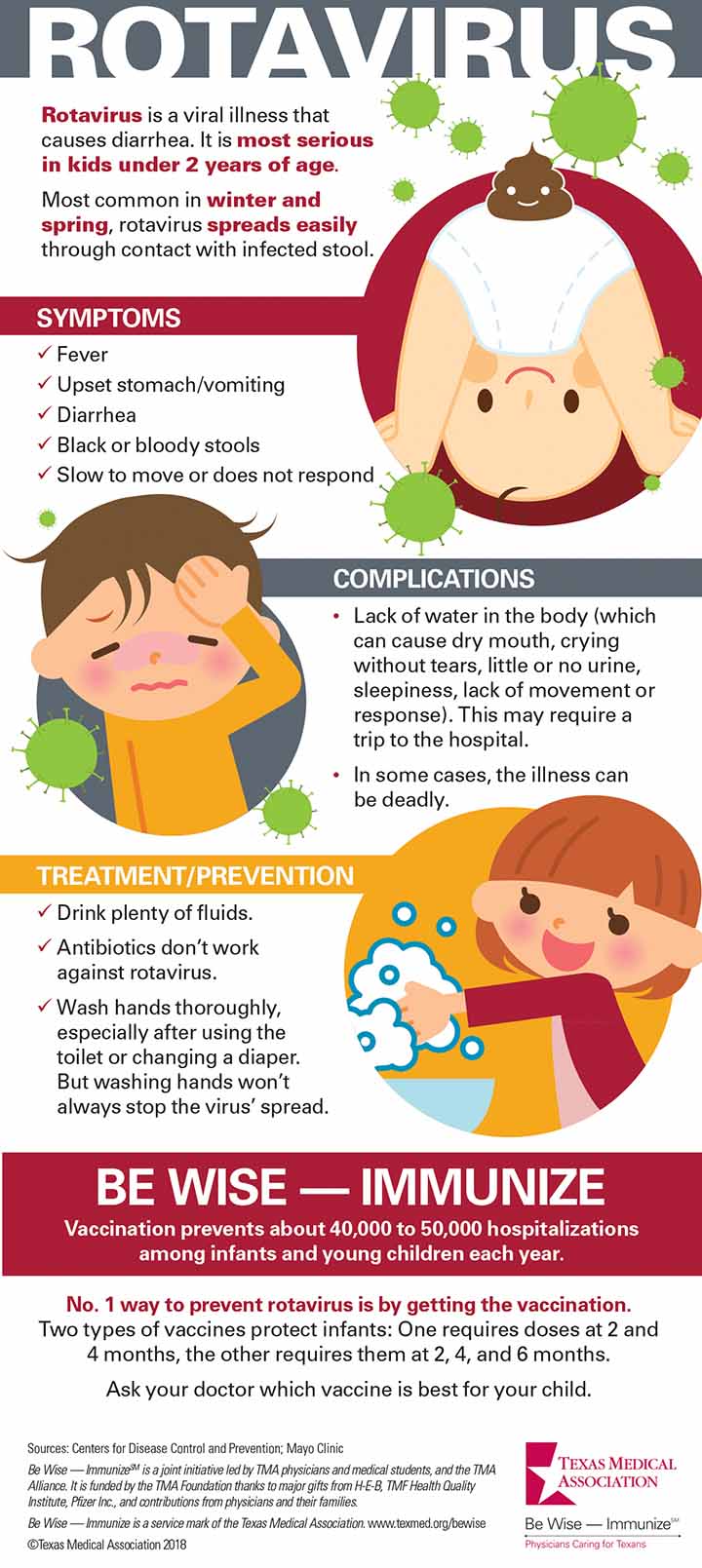Rotavirus is so common that it’s the cause of most cases of diarrhea for young children in the world today, according to the Centers for Disease Control and Prevention (CDC). It is a highly contagious viral infection that inflames the lining of the stomach and intestines, and especially affects children 2 years old and younger.
In the United States, the introduction of a vaccine in 2006 helped arrest rotavirus illnesses and deaths. Before the vaccine, rotavirus caused more than 200,000 emergency department visits and as many as 60 deaths of young children each year, CDC says.
However, rotavirus spreads easily through contact with infected stools, and outbreaks still occur. In California in 2017, three rotavirus outbreaks took place among vaccinated and unvaccinated children and adults. This led to the death of one unvaccinated child, CDC says. Vaccination remains the most effective way to prevent the spread of the disease.
Two vaccines — RotaTeq and Rotarix — are used in the U.S. today to protect children from rotavirus illness. They prevent about 40,000 to 50,000 hospitalizations among infants and young children each year, CDC says. This success has a multiplier effect: As more children get vaccinated, they prevent the spread of rotavirus to other children and to adults.
Download a printable copy of the infographic below.

Tex Med. 2019;115(1):47
January 2019 Texas Medicine Contents
Texas Medicine Main Page
Last Updated On
July 02, 2019
Originally Published On
December 21, 2018